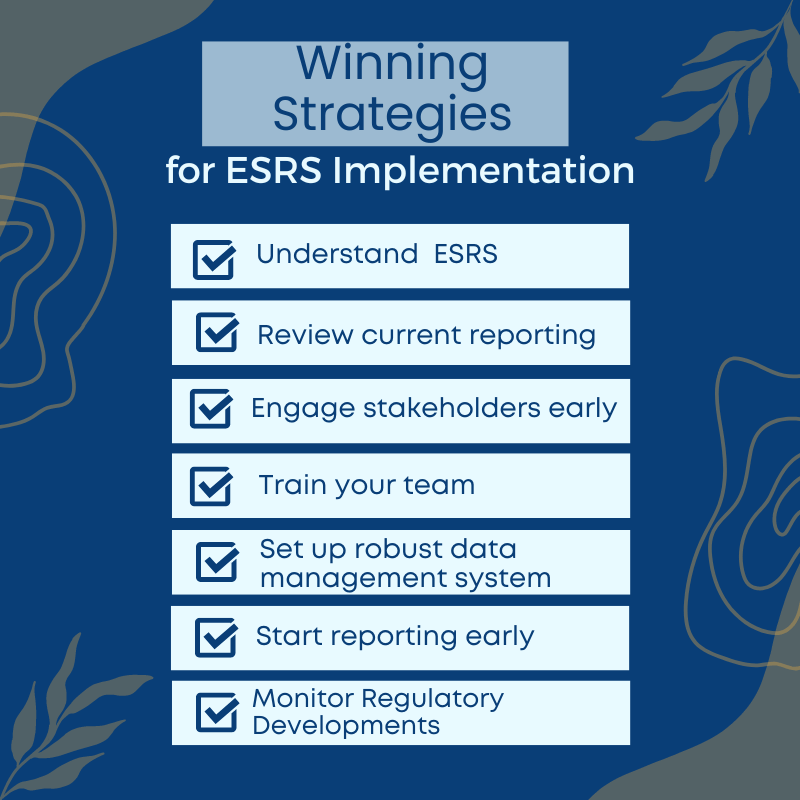The Corporate Sustainability Reporting Directive (CSRD) is a significant policy development that has positioned the European Union (EU) as a global leader in corporate sustainability. CSRD is a comprehensive strategy that ensures companies, big and small, provide accurate and reliable information about their social, environmental, and financial performance. This blog explores how the CSRD can help in advancing Sustainable Development Goals (SDGs).
If you prefer visual content over reading the blog, take a look at our summary video below.
Understanding CSRD and SDGs
Before delving into the interplay between CSRD and SDGs, it is critical to understand these concepts.
The CSRD is an essential part of the EU’s new strategy for sustainable finance. It replaces and expands upon the Non-Financial Reporting Directive (NFRD), covering nearly 50,000 companies in the EU, up from around 11,000 under the NFRD. The CSRD necessitates businesses to follow the detailed European sustainability reporting standards (ESRS), providing a clear picture of their sustainability impacts, risks, and opportunities.
On the other hand, the Sustainable Development Goals (SDGs) are a set of 17 global goals set by the United Nations General Assembly in 2015 as a part of its 2030 Agenda for Sustainable Development. The SDGs aim to eradicate poverty, protect the planet, and ensure prosperity for all as part of a new sustainable development agenda.
CSRD and SDGs: A Strategic Alignment
The connection between CSRD and SDGs is grounded in their shared objectives. Both aim to foster a sustainable and inclusive future for all. CSRD can directly contribute to achieving SDGs by compelling businesses to consider their environmental and social impacts and improve their practices accordingly. The SDGs were explicitly referred to in the CSRD as one important reason for the European Commission to adopt this new directive. By aligning the CSRD with the SDGs, the EU aims to harness the power of this important legislative instruments in supporting its Green Deal ambitions.
Enhancing Transparency and Accountability
CSRD is a significant tool for enhancing transparency and accountability in businesses, two elements that are crucial for achieving SDGs. By enforcing standardised and reliable sustainability disclosures, CSRD ensures that stakeholders, including investors, consumers, and regulators, have a clear view of companies’ sustainability performance. Transparency enables stakeholders to make informed decisions that align with sustainable development. Companies must also ensure alignment with the EU Taxonomy in reporting their environmental impacts.
Promoting Sustainable Business Practices
Through its rigorous reporting requirements, CSRD encourages companies to adopt sustainable business practices and requires companies to report on their sustainability/ESG performance, beyond financial reporting, in their managemetn reports. Companies are impelled to reassess their operations, supply chain, and overall business model to meet the sustainability standards. This realignment of business practices significantly supports the achievement of several SDGs, including responsible consumption and production (SDG 12), decent work and economic growth (SDG 8), and industry, innovation, and infrastructure (SDG 9).
Advancing Climate Action
CSRD places a significant emphasis on environmental disclosures, thereby advancing the SDGs related to climate action and environmental sustainability. By disclosing their greenhouse gas emissions, waste management procedures, and biodiversity impact, companies are more likely to reduce their environmental footprint, supporting the achievement of climate action (SDG 13), life below water (SDG 14), and life on land (SDG 15).
Driving Social Inclusion
CSRD also promotes social inclusion by requiring companies to report on aspects like workforce diversity, human rights, and community relations. This focus on social metrics aligns with several SDGs, including gender equality (SDG 5), reduced inequalities (SDG 10), and peace, justice and strong institutions (SDG 16).
The Way Forward
While CSRD provides a robust framework to support SDGs, merely reporting on sustainability is not enough. To fully exploit the potential of CSRD in advancing SDGs, companies must go beyond compliance. They should view sustainability reporting not as a regulatory burden but as an opportunity to improve their operations, enhance their reputation, and create value for stakeholders.
Businesses, including both large companies and SMES, also need to embrace a holistic approach to sustainability. Instead of addressing social and environmental issues in silos, they should consider the interconnectedness of different sustainability aspects and the SDGs. By doing so, they can identify synergies, manage trade-offs, and design integrated solutions that benefit not only their bottom line but also society and the environment.
Different company groups will have to comply with various ESRS standards and start reporting in different timelines. Please check our freely availalbe Mastering CSRD Course for more details.
In conclusion, the CSRD holds enormous potential in advancing SDGs. Its emphasis on transparency, sustainable business practices, climate action, and social inclusion can significantly contribute to achieving the ambitious agenda set out by the SDGs. However, to unlock this potential, companies need to step up their sustainability game, transforming the way they do business and the role they play in society. Only then can we hope to create a sustainable and inclusive future for all.


